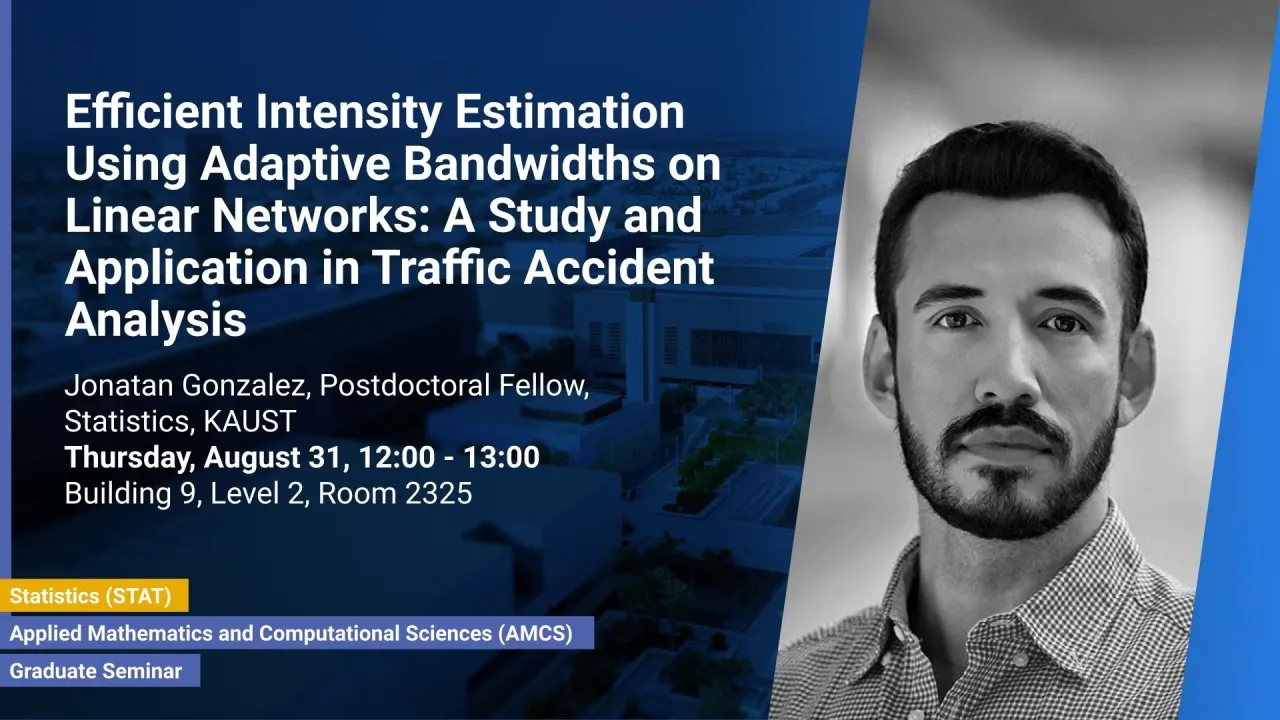
Efficient Intensity Estimation Using Adaptive Bandwidths on Linear Networks: A Study and Application in Traffic Accident Analysis
Estimating first-order intensity functions is crucial in the analysis of point patterns on linear networks, but selecting suitable bandwidths for non-parametric methods remains challenging. We propose an adaptive intensity estimator for the heating kernel that adjusts bandwidths based on data points, a novel approach in this context.
Overview
Abstract
Estimating first-order intensity functions is crucial in the analysis of point patterns on linear networks, but selecting suitable bandwidths for non-parametric methods remains challenging. We propose an adaptive intensity estimator for the heating kernel that adjusts bandwidths based on data points, a novel approach in this context. We extend a partitioning technique using bandwidth quantiles to expedite estimation, demonstrated through simulations. Our method efficiently approximates direct estimation, greatly reducing computation time. Applying this technique to estimate traffic accident intensity in a Bogota neighborhood highlights its real-world relevance and efficiency.
Brief Biography
Jonatan González is a seasoned researcher with expertise in statistical methodologies, particularly in spatial and spatio-temporal analysis. With a Ph.D. in Statistics, he has made scientific contributions that bridge theory and practical applications. Jonatan's innovative work includes developing novel statistical models for spatial point patterns and their application in various biomedical and environmental domains. His research, showcased through numerous impactful publications, demonstrates his leadership in generating new insights and fostering collaborations. Jonatan's commitment to advancing statistical science extends to mentoring young researchers and actively participating in evaluating projects and research activities. His multidisciplinary approach, solid international collaborations, and contributions to knowledge dissemination underline his pivotal role in shaping the future of statistical research and its real-world impact.